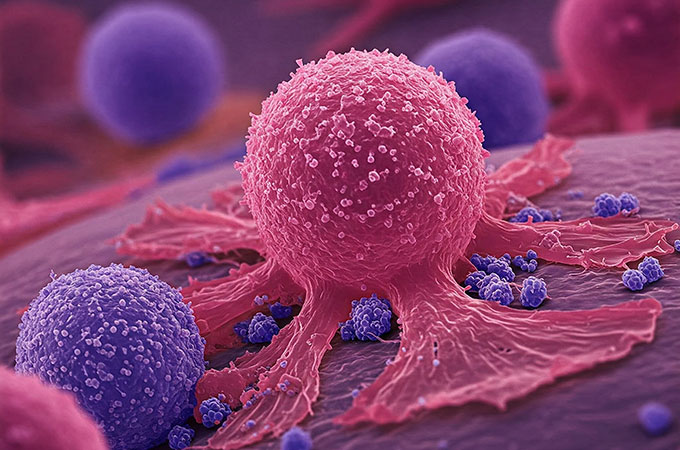It’s the kind of plot twist that could keep you up at night—if you weren’t already fretting about your brain health. What if the foggy confusion of Alzheimer’s and the relentless invasion of glioblastoma, the most ferocious brain cancer out there, weren’t just cruel twists of fate? What if they were both the handiwork of tiny, tag-teaming invaders: bacteria and viruses ganging up to sabotage your body’s defenses? That’s the bombshell preliminary finding from Stanford bioengineer Dr. Annelise E. Barron, who dropped it in a candid chat last month, hinting at a shared root for these devastating brain wreckers.
Barron, whose lab dives deep into how our innate immune system fends off nasties, laid it out plain: her team’s fresh, yet-to-be-published data points to bacterial-viral co-infections as the sneaky spark for cognitive meltdown and tumor mayhem. Picture this: these pathogens aren’t bumbling around—they’re crafty operators that hack your immune alarm system. Specifically, they flip the switch on interferon signaling, that crucial first-line “hey, invaders!” alert your body sends to rally the troops. Without it firing properly, your brain’s natural guards go slack, letting inflammation run wild and cells spiral into chaos. The fallout? Not just the memory-robbing plaques and tangles of Alzheimer’s, but a predisposition to rogue growths like glioblastoma, where tumors chew through brain tissue like acid on paper.
The numbers Barron shared pack a punch: in their analysis, a staggering 89% of glioblastoma tumors showed signs of this same co-infection cocktail that’s tied to dementia’s creep. It’s like finding the same fingerprints at two grisly crime scenes. And it’s not pie-in-the-sky stuff—Barron’s been chasing infection’s role in neurodegeneration for years, building on her work with LL-37, a powerhouse “ninja protein” in our arsenal that zaps microbes and might even tangle with Alzheimer’s infamous amyloid-beta plaques. Past studies have nodded to bugs like herpes viruses or gum-disease bacteria lurking in Alzheimer’s brains, stirring up immune overreactions that gum up the works. Now, Barron’s data suggests these co-infections don’t just tag along—they orchestrate the whole tragic symphony, weakening defenses across the gut-brain axis and setting the stage for both dementia and cancer.
Of course, this is unpublished territory, so the science world’s got its eyebrows raised—fair enough, since big claims need big backups. Critics point out that while infections pop up in brain autopsies, proving they pull the trigger rather than just crashing the party takes rigorous trials. Epidemiological oddities add intrigue, too: folks with Alzheimer’s oddly dodge some cancers like lung, but face higher odds for brain tumors, hinting at immune glitches gone haywire. Still, if Barron’s onto something, it flips the script from “inevitable aging doom” to “targetable invaders,” and that’s a spark of hope that hits you right in the gut—literally, since she ties it to that polymicrobial mess in our gut-nerve pipeline.
So, what’s a worried brain-owner to do while the lab coats duke it out? Barron’s vision zeroes in on beefing up that innate immune muscle to outsmart these pathogens, and hey, you can start small today with habits that fortify your defenses. Kick off with a gut-friendly diet—think fermented foods like yogurt or kimchi to crowd out bad bugs, plus fiber-rich veggies to keep your microbiome humming. Layer in daily movement, like a brisk 30-minute walk, to rev your interferon pathways without breaking a sweat. Don’t skip sleep; it’s prime time for immune recharge, aiming for seven to nine hours under the covers. And consider stress-busters—meditation or deep breaths—to dial down chronic cortisol that lets infections sneak in. If you’re over 50 or have family history, chat with your doc about screening for gum disease or viral hotspots; simple antimicrobials might nip early threats. It’s no magic bullet, but stacking these odds feels empowering, like arming your inner ninja against the shadows.
In a field starved for breakthroughs, Barron’s hunch feels like a gut punch of possibility—reminding us that sometimes the monsters under the bed are real, but so’s our fightback grit. Fingers crossed her data sees the light of day soon; until then, it’s a wake-up call to nurture that beleaguered brain of yours.
This piece draws on unpublished findings shared by Dr. Annelise E. Barron during her September 17, 2025, interview with Nicole Shanahan, as discussed in online forums and social media clips.

